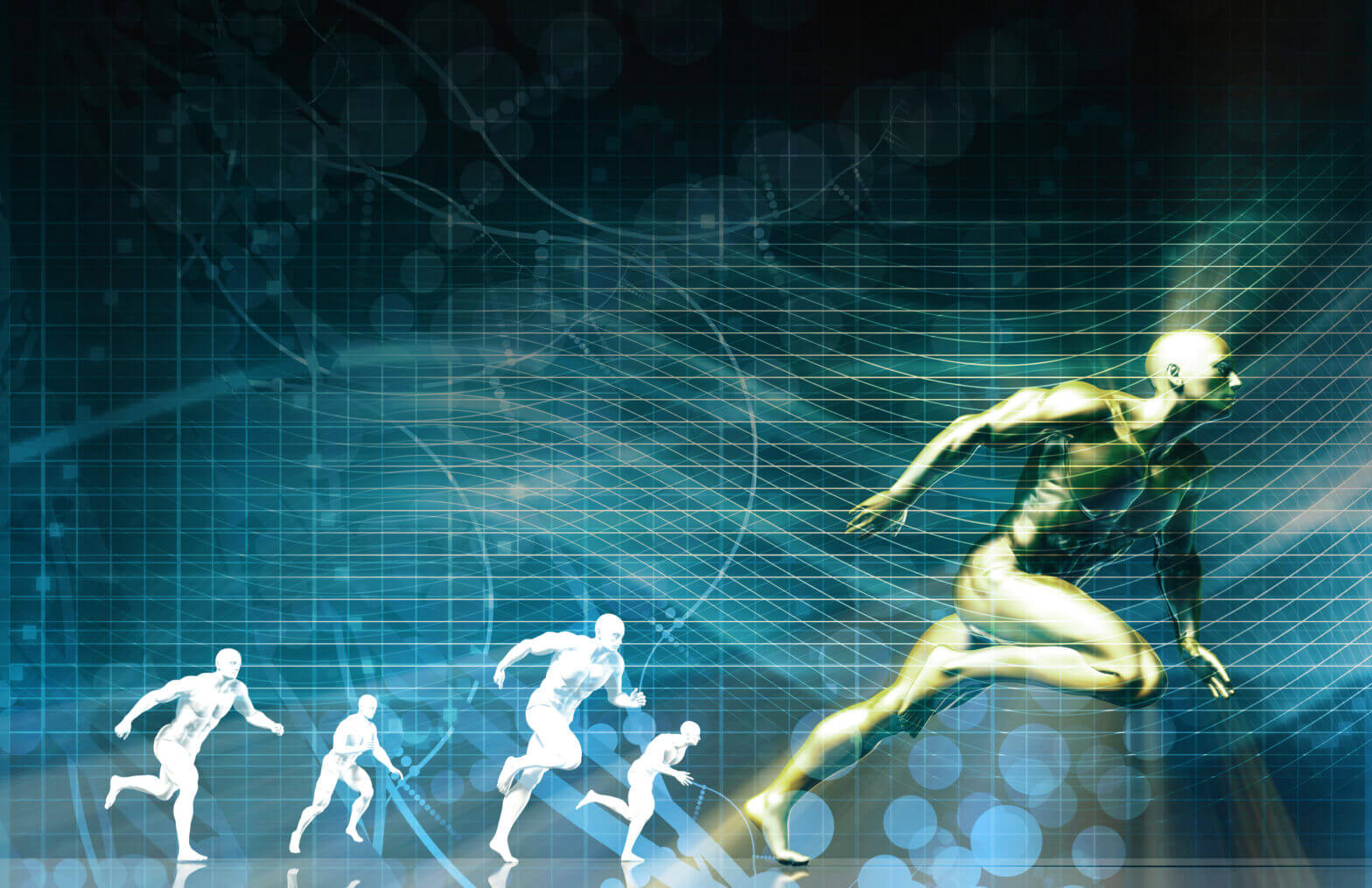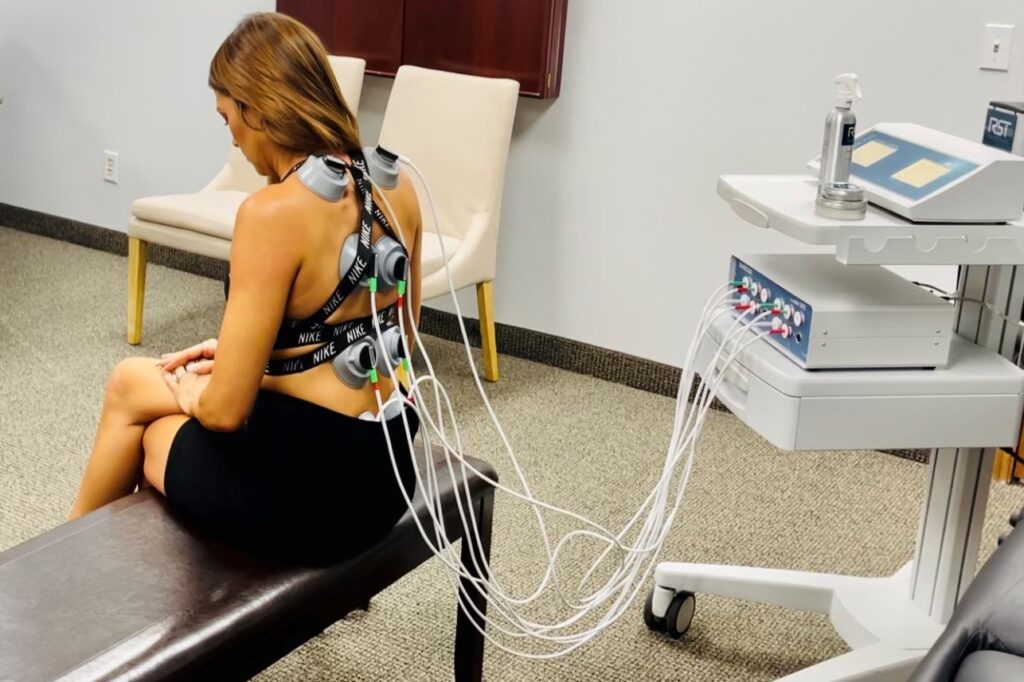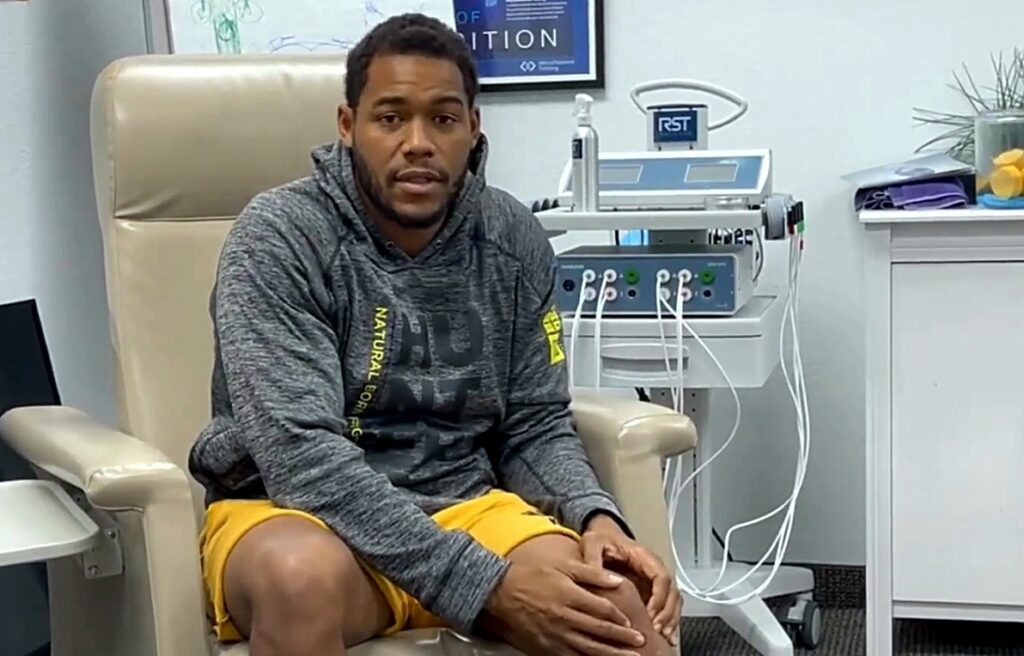Sports injuries are quite common. In fact, it is estimated there are 2.9M sports injuries per year due to high-contact sports on professional, college or high school athletic levels. Even non-contact sports that weekend warriors engage in contribute to an elevated level of injuries. Many try to maintain an active lifestyle that includes physical activities whether it is running, playing tennis, golfing, biking, working out, and/or some doing extreme sports. Regardless of the sport or whether you are a highly trained athlete, weekend warrior, or fitness enthusiast, there is always a chance you feel that blast of pain and know you went too far! Elite athletes’ recovery from intense training and hard-fought games is especially important to high levels of performance. Regardless of the competitive athletic level, most serious sports injuries are typically related to overall manifestations of a chronic process involving multiple underlying physiological factors. These factors include:
Cardiovascular Vigor
The circulatory volume increases providing enhanced oxygen throughout the tissue with less direct stress on the heart muscle. Conditioning exercises will improve blood circulation through muscles and tissues. As blood circulates through muscle, more oxygen is available, and more heat can be removed from the body.
Respiratory Vigor
Respiration is how much oxygen is introduced to the individual’s blood and limiting factors such as lung volume and airway diameter from the nostrils through the windpipe may influence the amount of available oxygen. Breathing is increased during hard work-out and this is directly related to the pH level in the blood. The more acidic the blood (low pH), the harder the person will breathe to get rid of metabolites as well as to take in sufficient amounts of oxygen.
Thermoregulation
(Biosystem heat dissipation) Sports activities and the related working muscles produce heat. There are two ways to eliminate or dissipate it. First, automatically increased heavier breathing and expiration of hot air along with the intake of cooler air dramatically reduces the body’s temperature, especially around the heart region. Second, heat dissipating results are produced through increased sweating. As the athlete’s body overheats, circulatory blood vessels in the skin become vasodilated so they can hold and move more blood. The evaporation of sweat cools the body.
Skeletal Weakness
Joints, tendons, ligaments, and bones make up the skeletal system. Over-worked and over-stressed athletes are more likely to suffer sprains and strains when a particular muscle fails to respond resulting in an incorrect physiological positioning of a ligament or joint. Unconditioned joints, ligaments, and bones are especially susceptible to traumatic shock, twist, and sprains.
Muscle Exhaustion
There are two types of exercise activity that fuel the muscles, aerobic (low-intensity training) and anaerobic (high intensity causing the heart rate to exceed 140 bpm). The anaerobic system is much less efficient and requires more than ten times the fuel to produce the same amount of biosystem energy. The anaerobic system also produces lactic acid which when elevated accumulates in an area of the muscle resulting in inflammation, pain, and general fatigue. Proper conditioning training will improve and deliver increased oxygen to the working muscles giving an enhanced athletic health and performance and assisting in eliminating the lactic acid before it causes damage and tissue degeneration.
Introducing RST-SANEXAS neoGEN® Series using Electric cell-Signaling Technology (EcST)
RST-SANEXAS neoGEN® -Series provides an energy approach using advanced quantum-based Electric cell-Signaling Technology (EcST). The neoGEN® system is an FDA cleared, well-established innovative device that produces complex electric cell-signaling energy waves. By using this sophisticated and painless electro-energy technology along with associated harmonics, the device targets and transcutaneously delivers comprehensive electric cell signal energy waves to the affected area that can penetrate deeper into the tissue allowing cells and surrounding tissue to start the recovery processes. The device provides a non-pharmaceutical, fast, efficient, and safe treatment option to manage acute and chronic (long-term) intractable pain, increase circulation, reduce muscle spasms, and improve muscular reeducation.
Barbie Blank professionally known as “Kelly Kelly”, American professional wrestler and 2x champion with American WWE
“I suffer from neck and back pain. Over the past 2 years, I have done everything I could do to relieve the pain – chiropractor, cupping….you name it, I’ve done it. So, finding RST-SANEXAS and doing this completely changed my life. I was in complete shock on how good I felt afterwards. It was like a miracle, Anybody out there, don’t give up. This is it!”
Michael Hunter II “The Bounty”, 2-time 2012 Olympian Heavyweight Boxer
“She put me on the neoGEN® machine, and I mean right now I’m not feeling the same pain which is crazy. It has dissipated. And my knee…I also have a knee injury which we worked really hard on today. She put a lot of electrodes on my knee, and after one 20-minute period, my knee seems to be moving perfectly good and the pain has dissipated too. So, I’m going to continue to keep getting these.”
Regardless of the injury or your athletic prowess, RST-SANEXAS neoGEN® Electric cell-Signaling Technology (EcST) can get you back on the treadmill to recovery. For more information visit www.rstsanexas.com and Find a Doctor to help relieve your pain and get you back in the game of life today. You won’t regret it! To find out more, check out our Science and neoGEN® pages by clicking on their tabs at the top of our website.



